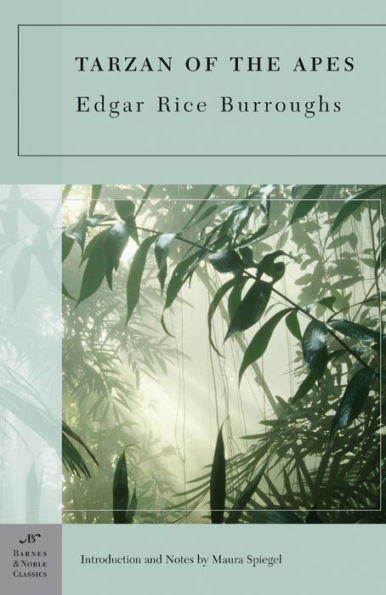Read an Excerpt
From Maura Spiegels Introduction to Tarzan of the Apes
Tarzan of the Apes was a runaway success when it first appeared. Before he knew it, Burroughs had created a Tarzan industry. He struck deals for daily Tarzan newspaper comic strips and movies (and, later, radio shows), and he licensed Tarzan statuettes, Tarzan bubble gum, Tarzan bathing suits, and an assortment of other merchandizing ventures. Burroughs would write twenty-three Tarzan sequels, and estimates of his lifetime sales range between 30 and 60 million books.
With all the enthusiasm came detractors, those who said Tarzan was unoriginal, his hero just a variation on Kipling’s Mowgli, who, in The Jungle Books, is adopted as an infant by wolves. Kipling himself was of this opinion, writing in his autobiography, “If it be in your power, bear serenely with imitators. My Jungle Book begot Zoos of them. But the genius of all genii was the one who wrote a series called Tarzan of the Apes. I read it, but regret I never saw it on the films, where it rages most successfully. He had jazzed the motif of the Jungle Books, and, I imagine, had thoroughly enjoyed himself.”
In some respects, Tarzan is a distant descendant of frontier legends such as Daniel Boone, Davy Crockett, and James Fenimore Cooper’s character Hawkeye. Tarzan follows the tradition of frontier stories in which white heroes achieve their full manhood by emulating the ways of Indian hunters and warriors, of “savages.” In Tarzan of the Apes, the frontier is replaced by the jungle, and the “savages” are apes and Africans instead of Indians. Like the pioneer heroes, Tarzan symbolically merges the skill and ferocity of the savage with the superior mental and moral acuity attributed to the “civilized” man. Richard Slotkin has argued that the false values of “the metropolis,” be it European culture or urban modernity, can be purged by the adoption of a more primitive and natural condition of life, by a crossing of the border from civilization to wilderness. But adopting the ways of the beast or “savage” does not mean becoming one; it means you know how to turn his own methods against him.
Critic Leslie Fiedler described Tarzan of the Apes as “that immortal myth of the abandoned child of civilization who survives to become Lord of the Jungle.” This basic plot has been adapted and readapted in several dozen film versions. There are many Tarzans; there are noble savages, simple and gentle guardians who protect the jungle and its creatures from arrogant but frightened jungle-intruders, and there are fierce fighting Tarzans, whose primitive existence is poignantly harsh and brutal. Specific features of the Tarzan that Burroughs created, however, are commonly omitted from adaptations; rarely is he represented as the son of an English lord and lady who teaches himself to read and who demonstrates, through his demeanor and skill at killing, his Anglo-Saxon “racial superiority” and his inherited aristocratic taste and sense of honor. These elements of the story don’t have the kind of appeal they once did. As early as the first sound film adaptation in 1932, Hollywood democratized Tarzan, taking away his title and his British heritage. Over the years the representations of Tarzan’s Africa have varied as well. In many of the films, including the 1999 Disney animated version, no Africans appear at all, nor does Tarzan employ his method of killing by hanging, an evocation of lynching that, dismayingly, Burroughs seems to have been untroubled by. Because we want our heroes to embody our principles, Tarzan continues to evolve.




